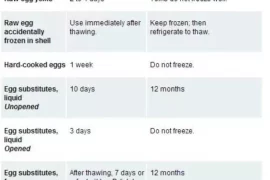Ultimate Guide to Safely Heating Wheat Packs for Parents
Hello Super Parents! Are you looking to provide some warmth and comfort for your little ones or seeking a cozy remedy for your own aches? Wheat packs are a fantastic natural solution for keeping snug or easing pains, but it’s super important to know how to use them correctly and safely. So, let’s embark on this cozy journey together!
What is a Wheat Pack?
Before we hop into the nitty-gritty of heating wheat packs, let’s understand what they are. Wheat packs are therapeutic heating pads filled with grains, most commonly wheat, which can be heated in the microwave or sometimes in the oven. They are often used to soothe muscle aches, menstrual cramps, or just to keep warm during chilly nights.
Why Wheat Packs are Great for Your Family
- Natural Relief: Wheat packs are a perfect, drug-free way to relieve pain or discomfort.
- Reusable: They’re eco-friendly and can be used over and over again, saving you money and reducing waste.
- Comforting: The warmth provided by a heated wheat pack is similar to a warm hug and can help reduce stress and anxiety.
- Convenient: Easy to heat and use, wheat packs can be used at home, on car trips or while travelling.
Step-by-Step Guide to Heating Your Wheat Pack Safely
Heating a wheat pack is as easy as pie, but always remember, safety first! Here’s how you can get your wheat pack to the perfect temperature without any mishaps:
- Read the Instructions: This might seem like a no-brainer, but each wheat pack is different. Always read the manufacturer’s guidelines for specific heating times and instructions.
- Check for Damage: Before you pop your wheat pack into the microwave, give it a quick check-over. Look for any tears or damage that could lead to spillage of the wheat grains, as this could potentially cause sparks or fire.
- Heating Times: As a rule of thumb, start with the least amount of recommended time and adjust accordingly. Overheating can scorch the wheat, making it ineffective and unsafe.
- Temperature Testing: After heating, carefully feel the wheat pack with the back of your hand to ensure it’s evenly warm and not too hot. This is especially important if you’re using it for children, as their skin is more sensitive.
- Add a Cup of Water: Placing a small cup of water in the microwave alongside your wheat pack can prevent the wheat from drying out and burning.
Now that we’ve covered the basic steps for heating your wheat pack, let’s look at some expert tips to keep them working their best.
Expert Tips for Wheat Pack Maintenance
- Stay Moist: To keep your wheat pack from drying out, occasionally sprinkle water on it before heating. The moisture will help maintain the temperature and prolong the life of your pack.
- Storage Savvy: When not in use, store your wheat pack in a cool, dry place. To prevent mold, ensure it’s completely cool and dry before putting it away.
- Clean with Care: Wheat packs can’t be washed like a regular fabric, as the grain inside needs to stay dry. For cleaning, simply wipe the surface with a damp cloth and let it air dry thoroughly.
- Regular Inspections: Frequently inspect your wheat pack for signs of overuse, such as a burnt smell or discoloration. If you notice these signs, it’s time to replace your pack.
Adopting these practices will not only ensure the safe use of wheat packs, but also their longevity. You can rest assured that your family will experience the benefits of your wheat pack, warm and trouble-free, night after snug night.
So now that we’ve cozied up to the safety basics, how about we delve a little deeper? In the next section of our guide, we’ll explore creative ways to introduce wheat packs to your kids, address common safety concerns, and look at the different types available on the market. Let’s keep the warmth spreading safely!
We hope this guide has helped light the way to a happier, warmer, and more comfortable home for you and your family. Remember, wheat packs are like cuddles in a cushion – they’re there to provide comfort and care, so let’s make sure we treat them with a little love too!

5 Things Parents Should Know When Preparing to Heat a Wheat Pack
- Understand Microwave Variations: Microwave ovens can vary in power, which means that the heating time for one device may differ from another. If you’ve just purchased a new microwave or are using someone else’s, start by heating for a shorter time and adjust as necessary to find the perfect heat level for your wheat pack.
- Even Heat Distribution: To avoid hot spots, shake or knead your wheat pack halfway through the heating process. Doing so distributes the grains and heat more evenly, preventing any uncomfortable surprises when it’s time to cuddle up.
- Supervise Children Closely: If older children want to learn how to heat their wheat packs, make sure there is always an adult supervising them. This will help them learn how to safely use the microwave and understand the importance of the correct heating time.
- Avoid Direct Skin Contact: Encourage your family members to wrap the wheat pack in a towel or use a cover to prevent direct contact with the skin immediately after heating, as it might be too hot and could cause burns.
- Know When to Retire Your Wheat Pack: With time and usage, wheat packs can lose their effectiveness. If you notice a decrease in heat retention or a musty smell, it might be time to say goodbye and bring a new wheat pack into your home comforts.
Different Types of Wheat Packs
Wheat packs are not one-size-fits-all! You’ll find a variety of shapes, sizes, and fabric covers to choose from. Some wheat packs are designed with partitions to sit comfortably on shoulders or wrap around limbs. Others are infused with calming scents, such as lavender, to provide additional aromatherapy benefits. Explore the options to find the perfect match for your family’s specific needs.
Introducing Wheat Packs to Kids
Creating a positive experience with wheat packs for your children can be a fun activity. Introduce it as a special ‘comfort buddy’ or get creative by giving it a name. You can even have your child help choose a wheat pack with their favorite color or pattern. Remember, ensure they understand it’s not a toy and emphasize the importance of safety when using it.
Addressing Safety Concerns
As parents, safety is the top priority, especially when it involves heat and children. Take time to address questions or concerns with your kids. Use age-appropriate terms to explain why it’s important to heat the wheat pack properly and what to do in case it feels too hot. Education is key to preventing accidents and fostering a safe environment for using heat therapy at home.
It’s clear that wheat packs can be a comforting, natural, and effective way to bring warmth and relief to your family. With proper use, handling, and care, they can provide many cozy moments and soothing cuddles. As we embrace the natural, simple warmth of wheat packs, let’s ensure we always prioritize safety and learning, creating cherished, warm memories for years to come.
Heating a wheat pack correctly is as important as using it for comfort. The safety guidelines and maintenance tips provided in this guide will help you warm up your wheat pack without worries. Stay informed, stay safe, and enjoy the nurturing warmth that these fantastic little helpers can provide to both you and your precious little ones.
Happy heating, dear parents! Let the snuggles begin!
See more great Things to Do with Kids in New Zealand here. For more information see here
Disclaimer
The articles available via our website provide general information only and we strongly urge readers to exercise caution and conduct their own thorough research and fact-checking. The information presented should not be taken as absolute truth, and, to the maximum extent permitted by law, we will not be held liable for any inaccuracies or errors in the content. It is essential for individuals to independently verify and validate the information before making any decisions or taking any actions based on the articles.




